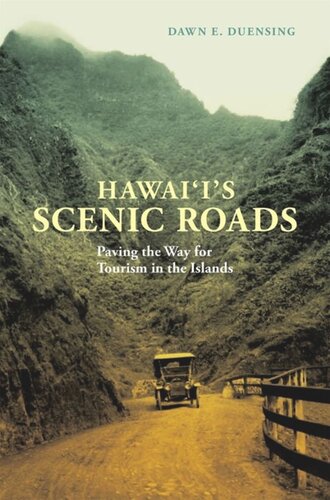

Most ebook files are in PDF format, so you can easily read them using various software such as Foxit Reader or directly on the Google Chrome browser.
Some ebook files are released by publishers in other formats such as .awz, .mobi, .epub, .fb2, etc. You may need to install specific software to read these formats on mobile/PC, such as Calibre.
Please read the tutorial at this link: https://ebookbell.com/faq
We offer FREE conversion to the popular formats you request; however, this may take some time. Therefore, right after payment, please email us, and we will try to provide the service as quickly as possible.
For some exceptional file formats or broken links (if any), please refrain from opening any disputes. Instead, email us first, and we will try to assist within a maximum of 6 hours.
EbookBell Team

4.0
16 reviewsHawai‘i's Scenic Roads examines a century of overland transportation from the Kingdom's first constitutional government until World War II, discovering how roads in the world's most isolated archipelago rivaled those on the U.S. mainland. Building Hawai‘i's roads was no easy feat, as engineers confronted a unique combination of circumstances: extreme isolation, mountainous topography, torrential rains, deserts, volcanic eruptions, earthquakes, and on Haleakalā, freezing temperatures.
By investigating the politics and social processes that facilitated road projects, this study explains that foreign settlers wanted roads to "civilize" the Hawaiians and promote western economic development, specifically agriculture. Once sugar became the dominant driver in the economy, civic and political leaders turned their attention to constructing scenic roads. Viewed as "commercial enterprises," scenic byways became an essential factor in establishing tourism as Hawai‘i's "third crop" after sugar and pineapple. These thoroughfares also served as playgrounds for the islands' elite residents and wealthy visitors who could afford the luxury of carriage driving, and after 1900, motorcars.
Duensing's provocative analysis of the 1924 Hawai‘i Bill of Rights reveals that roads played a critical role in redefining the Territory of Hawai‘i's status within the United States. Politicians and civic leaders focused on highway funding to argue that Hawai‘i was an "integral part of the Union," thus entitled to be treated as if it were a state. By accepting this "Bill of Rights," Congress confirmed the territory's claim to access federal programs, especially highway aid. Washington's subsequent involvement in Hawaii increased, as did the islands' dependence on the national government. Federal money helped the territory weather the Great Depression as it became enmeshed in New Deal programs and philosophy. Although primarily an economic protest, the Hawai‘i Bill of Rights was a crucial stepping stone on the path to eventual statehood in 1959.
The core of this book is the intriguing tales of road projects that established the islands' most renowned scenic drives, including the Pali Highway, byways around Kīlauea Volcano, Haleakalā Highway, and the Hāna Belt Road. The author's unique approach provides a fascinating perspective for understanding Hawai‘i's social dynamics, as well as its political, environmental, and economic history.